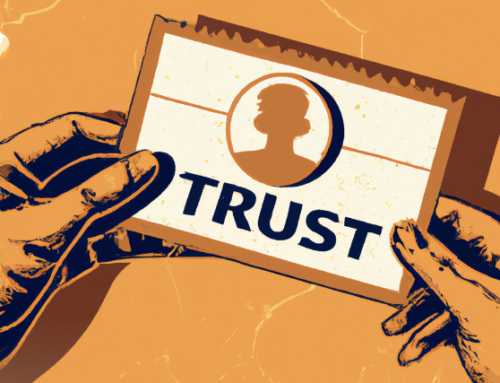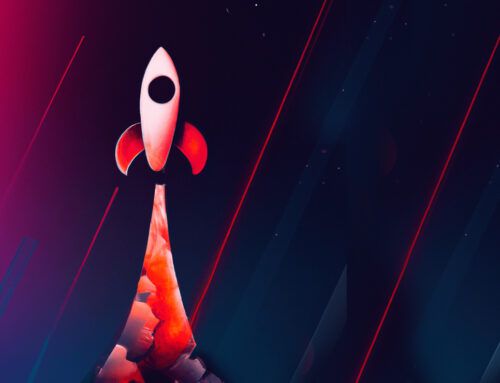by Christine Mansour, Operations Manager, Web3 Pro
NFTs are a cutting-edge new marketing tool to build loyalty. However, their marketing and distribution to customers needs to be based on a strategy focused on creating engagement.
How does your brand benefit from an NFT marketing strategy? What are the best ways to build customer loyalty? How are you going to maximize the return on your investments? How will your customers benefit when they buy your NFT? How will you create the kind of digital art for your brand that your customers will be eager to acquire and hold?
Keep Engagement Front of Mind When Creating NFTs
Nearly 13% of the US adult population, or around 40 million people, have already embraced the world of Web 3.0. Yet not everybody is ready yet to buy an NFT. This hesitation stems largely from a lack of knowledge about what benefits NFTs offer.
Start with incorporating membership perks or exclusive access to your brand events or properties.
Many IRL (in real life) customer-loyalty programs are more about the brand than about the customer. You can use NFT brand programs to shift that paradigm.
Tie Your NFTs to a Brand-related Cause
Art galleries and artists donate profits from the sale of their artwork to support non-profit organizations. Similarly, brands can use part of their NFT sales proceeds to make charitable donations. Consumers then bid on the NFT knowing that some portion of their money will support a good cause.
Procter & Gamble auctioned its “NFTP by Charmin” tokens and donated proceeds to Direct Relief, a 501(c)3 that provides emergency medical supplies to communities in need. Charmin sold five NFT designs, with bids ranging from $500 to $2,100.

Providing Flexible Rewards
Brands can create different levels of rewards tied to different NFTs to give customers a choice of how much they want to invest and how they want to be rewarded for their brand loyalty. Think of offering your customers an NFT that can be flexibly redeemed for bonus points, free upgrades, special digital experiences, exclusive access to content or early access to new products.
Marriott was one of the first hospitality brands to create its own NFTs. The company offered NFTs to Marriott Bonvoy customers who could use them as access passes to experiences in its future metaverse presence. NFT holders were also invited to physically attend a special event in Miami for a chance to win 200,000 Bonvoy reward points. These points could be redeemed for a range of options from free hotel nights and hotel upgrades to meals and services.

Rewarding Customers for Their Participation
Give customers freebies and thank-you gifts for their participation with your brand. Think of replacing the gift cards of the past with NFTs. For example, a brand may ask customers to complete a survey, provide a review, or receive a demo on a new product, and in return for their participation, they might receive a branded NFT.
What Makes NFTs Successful for Brand Loyalty?
If you are exploring NFTs for your brand, capitalize on what has already worked for other brands. Here are some options to consider that will result in better outcomes and increased customer loyalty.
Limited Availability
Many customers love products that are unique, limited, or exclusive. NFTs are unique, making them potentially more valuable than a replaceable commodity that anyone can own. Consider how to pair the attraction of scarcity with the value of your product or service.
Exclusive Accessibility
The success of club membership and retail loyalty cards indicates that many customers love to have access to exclusive deals and offerings. NFTs can gain them access to events, promotional up-sell offers, or other VIP-like benefits. The rock band Kings of Leon dropped three types of tokens in its “NFT Yourself” campaign. One consisted of a special album package, a second contained live-show perks (front-row seats for life), and the third carried exclusive audiovisual art.

Community Identity and Tribalism
Even in a niche user community, associating with others who share the same interests can make NFTs and digital media much more appealing. Bored Ape Yacht Club’s value skyrocketed when Jimmy Fallon and Paris Hilton purchased its NFTs. Regardless of whether the community includes key influencers or simply a strong bond exists between like-minded individuals, the sense of belonging strengthens brand loyalty and increases sales.
NFTs Create Excitement Beyond Your Customer Base
Customer loyalty programs are usually associated with current customers. However, incorporating NFTs and digital art into your marketing strategy can have the added benefit of expanding brand awareness among an entirely new market. Coca-Cola, Adidas, Gucci, and Lamborghini are well-established brands with a loyal customer base. Yet they have incorporated NFTs into their marketing mix because they enable them to reach an entirely new market of younger customers who have the money, influence, and cachet they’re looking for. These are also the same people who will become brand ambassadors and advocates for the next generation.
Advantages of Using NFTs for Building Customer Loyalty
Consider the advantages of investing in an NFT strategy:
NFTs are Unique
Your brand’s NFT offering will be unlike anyone else’s, within your industry and beyond. You choose the artwork, you determine the volume to be minted, and you create the buzz in your community. It’s your “owned marketing” that can extend beyond the “shared marketing” of PR, social media, and word of mouth.
NFTs are Inexpensive
NFTs are relatively easy to create and can be developed internally. You don’t have to pay for creative. Your only investment is your marketing cost, just as in any other campaign.
NFTs Provide a Return on Investment
Owning an NFT is about more than the artwork itself. Trendy customers like to be part of something new and hip. This creates a potential opportunity for brands to cash in on the associated market excitement of NFTs.
NFTs Generate Intrigue Amongst Current and Future Customers
NFTs, cryptocurrency, and the metaverse are topics that garner media attention. The novelty generates curiosity and intrigue. If you create a compelling and valuable NFT story, then even those consumers who may not be interested in Web 3.0 will be exposed to your brand in articles, blogs, and news stories.
NFTs Potentially Help Build Long-Term Brand Relevance
Companies that successfully market their brands with NFT strategies can build reach, momentum, and awareness in the long term. NFTs, when effectively used in marketing, add freshness and innovation to a brand. Several late-20th-century brands failed to keep pace with new media technologies, product development, and go-to-market strategies. The first generation of the internet (Web 1.0) was largely missed by once-powerful brands such as JCPenney, Kodak, Blockbuster, and RadioShack. They were overtaken by savvier marketers such as Target, Netflix, Best Buy, etc.
A Contract Between Brands and Customers
The rules of engagement in the world of digital assets are still being written. But it is already evident that NFTs represent an emotional contract between brands and their customers. The buyer purchases an NFT because she perceives value in the transaction. Ownership of a token makes her a member of an exclusive community engaged in a contract of affinity with the brand.
Early Trendsetter: Bored Ape Yacht Club
Bored Ape Yacht Club (BAYC), with 10,000 unique NFTs for sale, is followed by Jimmy Fallon, Paris Hilton, and Eminem. When a consumer buys a BAYC NFT, she receives not only the digital art but also access to the Yacht Club. Members-only benefits start with access to the BATHROOM, a collaborative digital graffiti board. BAYC promises additional benefits in the future that can be unlocked by roadmap activation. The club has also hosted in-person meetups in New York, California, Hong Kong, and the UK, featuring celebrities and concerts.

The NFT collection has grown BAYC membership to more than 6,000 and this token is among the most sought after in the market. BAYC’s NFTs sold for $190 when they were launched in 2021. In 2022, they already cost more than $400,000. Some celebrities have paid millions for a single NFT, just for the exclusivity. Ownership is a status symbol, and owners flaunt their tokens on social media, featuring them as their profile pictures.
Now, BAYC is going mainstream through collaborations with Adidas and Gucci. It has been carried on the cover of Rolling Stone. It has expanded within the digital world with ApeCoin, their own cryptocurrency, and Otherside, their own branded metaverse. The slate for innovation in metaverse marketing is still a blank one. Till now, brands have had the freedom to experiment with ideas. To maximize your success, consider working with a proven NFT marketing partner like Web3Pro.



